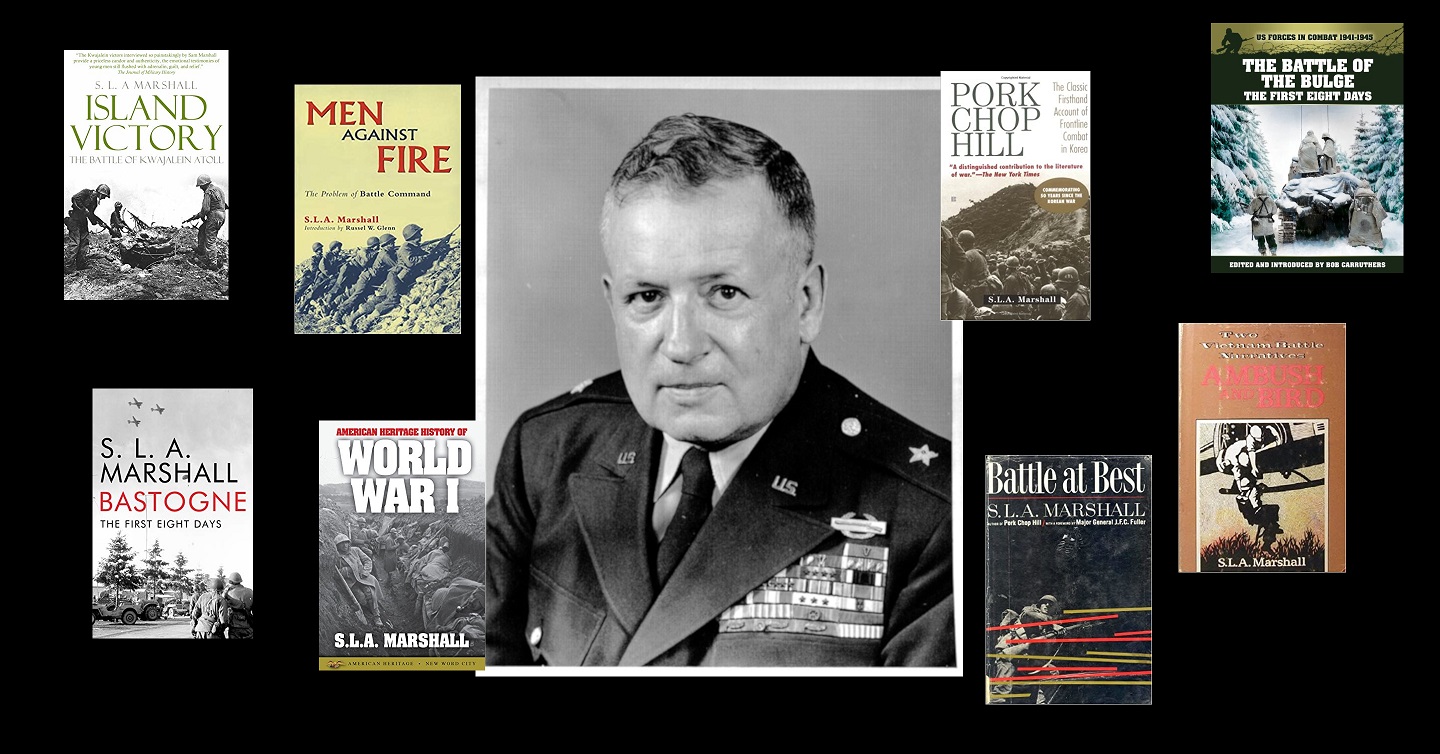It all started with a Twitter thread. Matthew Ford set his trap with a few sly comments about the ever controversial S.L.A. Marshall (SLAM) and three intrepid historians couldn’t help themselves but to jump into the fray. Listen now to part 2 with Matthew, Robert Engen, Rob Thompson and our DUSTY SHELVES editor Tom Bruscino. The four of them debate the merits and pitfalls of SLAM’s works, the different approaches they each use in their research, the role of rhetoric in military change and just a general ribbing back and forth between historians and journalists.
At no point does John Pershing wander off to the front in the Meuse-Argonne or Saint-Mihiel or anywhere else and go to guys like, hey, you guys need to fix bayonets, fire your rifles, and take that position.
Podcast: Download
Subscribe: Android | Email | RSS
Matthew Ford is a senior lecturer at the University of Sussex, now awaiting publication of his second book, Radical War: Data, Attention and Control in the 21st Century. His first book is on small arms innovation called Weapon of Choice: Small Arms and the Culture of Military Innovation.
Robert Engen is an Assistant Professor in defense studies at the Canadian Forces College and the author of two books on infantry in the Second World War and multiple articles and chapters on S.L.A. Marshall.
Rob Thompson is a historian with the films team at Army University Press out of Fort Leavenworth. He is the author of Clear, Hold, and Destroy: Pacification in Phú Yên and the American War in Vietnam.
Thomas Bruscino is an Associate Professor in the Department of Military, Strategy, Planning and Operations at the U.S. Army War College and the Editor of the DUSTY SHELVES series.
The views expressed in this presentation are those of the speakers and do not necessarily reflect those of the U.S. Army War College, U.S. Army, or Department of Defense.
Photo Description: Samuel Lyman Atwood Marshall (July 18, 1900 – December 17, 1977) was a chief U.S. Army combat historian during World War II and the Korean War.
Photo Credit: Archive of the U.S. War Department, Unknown military photographer of the Signal Corps

